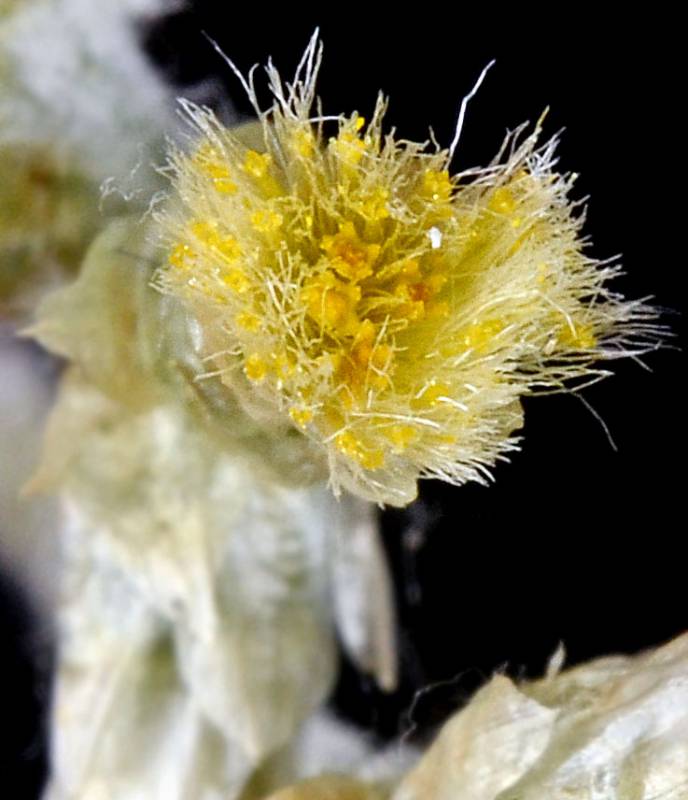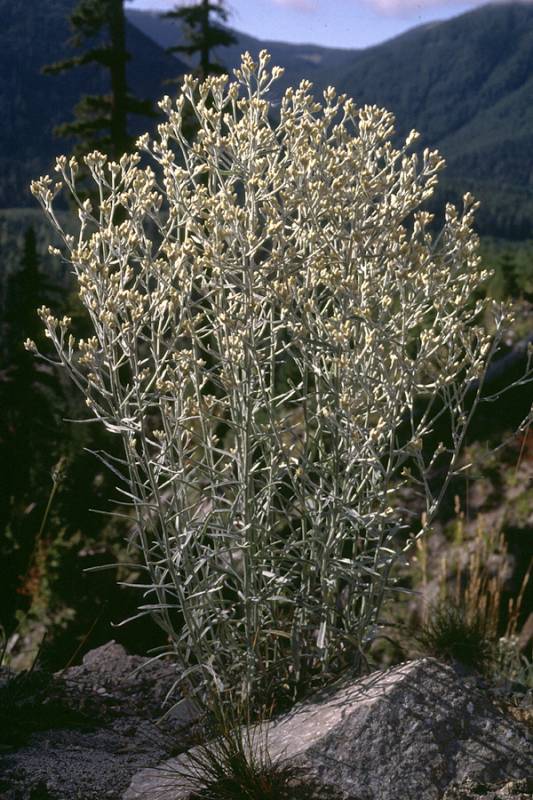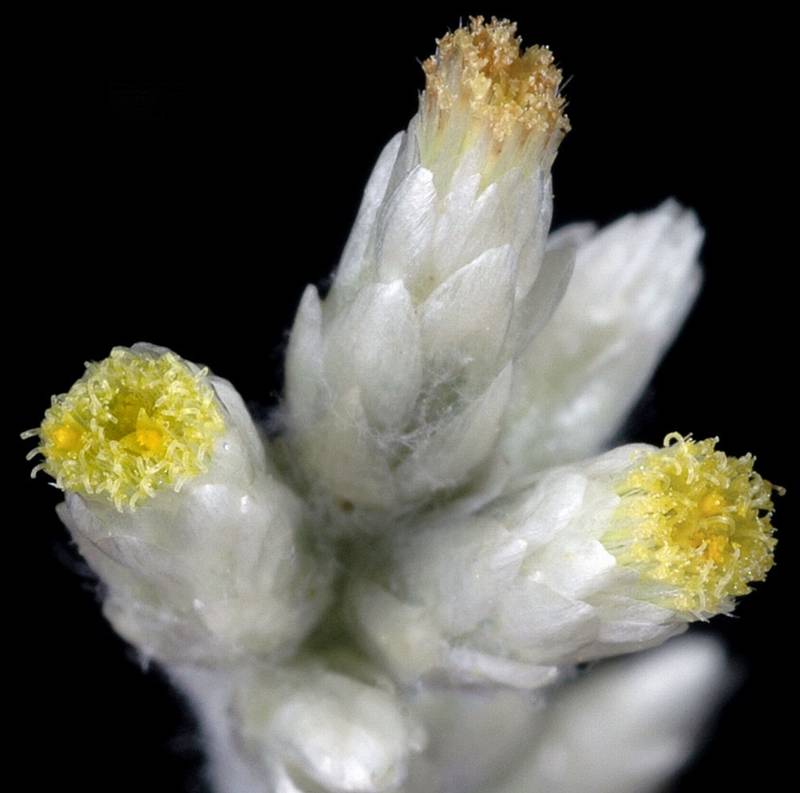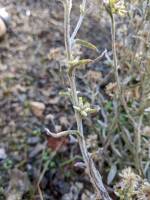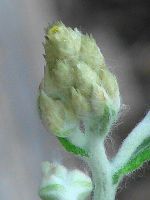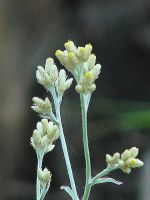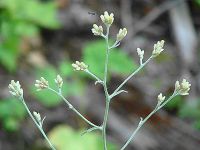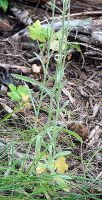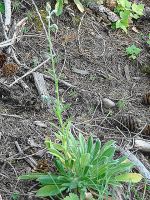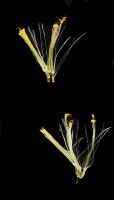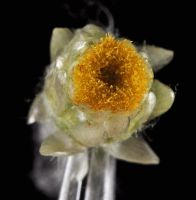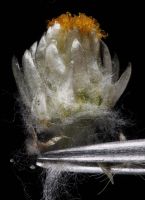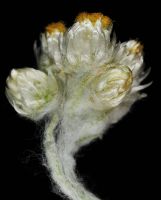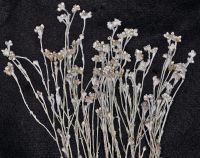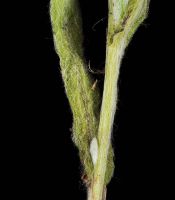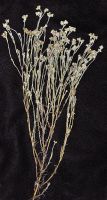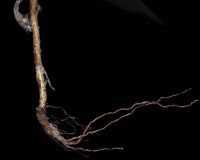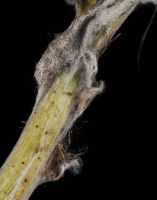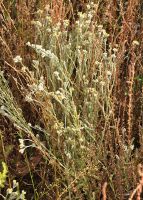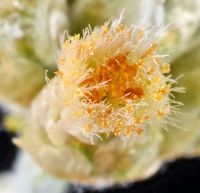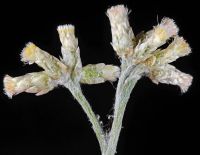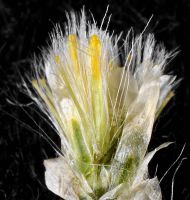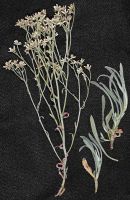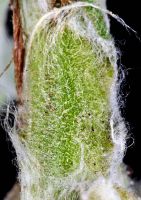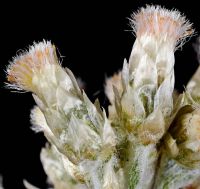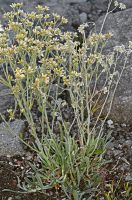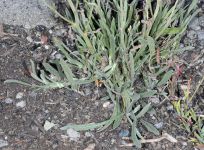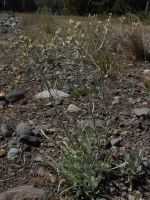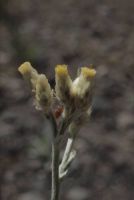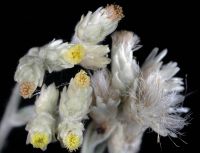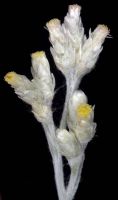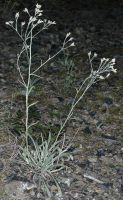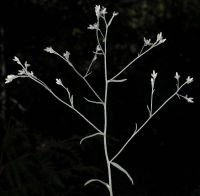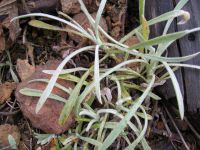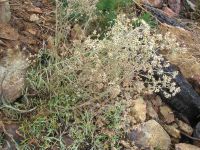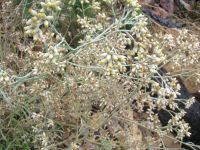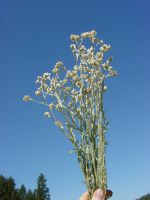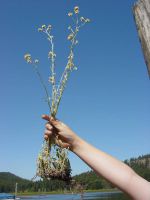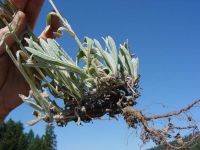Distribution: Occurring on both sides of the Cascades crest in Washington; British Columbia to California, east to Montana and Utah.
Habitat: Dry, sandy banks and ditches, open woods of ponderosa pine and Douglas fir, and mixed deciduous forests.
Flowers: June-September
Origin: Native
Growth Duration: Perennial
Conservation Status: Not of concern
Pollination: Bees, flies, beetles, wasps
Herbaceous perennials, the stems 30-70 cm. tall, loosely white-woolly, not glandular.
Leaves alternate, oblanceolate to linear, 3-8 cm. long and 3-6 mm. wide, with a wing down the stem below each leaf 4-15 mm. long, the blades loosely white-woolly and with sessile glands.
Heads in loose to dense, flat-topped inflorescences; involucres broadly top-shaped, 5-6 mm. long; involucral bracts in 3-4 series, usually shiny and whitish, glabrous, ovate to oblong; corollas all tubular, the outer pistillate, 35-55, the inner perfect, 4-7; pappus of capillary bristles.
Achenes rigid, roughened.
Publication: Sida. 21: 781. 2004.
Gnaphalium microcephalum Nutt. ssp. thermale (E.E. Nelson) G.W. Douglas
Gnaphalium microcephalum Nutt. var. thermale (E.E. Nelson) Cronquist [HC]
Pseudognaphalium canescens (DC.) Anderb. ssp. thermale (E.E. Nelson) Kartesz
Pseudognaphalium microcephalum (Nutt.) Anderb., misapplied [FNA19]
PNW Herbaria: Specimen records of Pseudognaphalium thermale in the Consortium of Pacific Northwest Herbaria database
WA Flora Checklist: Pseudognaphalium thermale checklist entry
OregonFlora: Pseudognaphalium thermale information
E-Flora BC: Pseudognaphalium thermale atlas page
CalPhotos: Pseudognaphalium thermale photos

